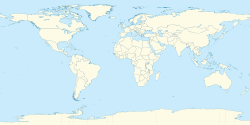ब्रुसेल्स
ब्रुसेल्स
| |||
|---|---|---|---|
| बेल्जियम के क्षेत्र | |||
| |||
 ब्रुसेल्स के कई रूप दर्शाता एक चित्र | |||
| |||
| उपनाम: यूरोप की राजधानी[1] विनोदी शहर[2][3] | |||
ब्रुसेल्स (red) की अवस्थिति – यूरोपीय संघ (brown & light brown) में | |||
| देश | बेल्जियम | ||
| Settled | c. 580 | ||
| Founded | 979 | ||
| Region | 18 जून 1989 | ||
| शासन | |||
| • मंत्री-प्रधानमंत्री | चार्ल्स पिक्वे (2004–) | ||
| • गवर्नर | जिन क्लेमेंट (2010–) | ||
| • राष्ट्रपति | एरिक थोमस | ||
| क्षेत्र | 161.38 किमी2 (62.2 वर्गमील) | ||
| ऊँचाई | 13 मी (43 फीट) | ||
| जनसंख्या (साँचा:Metadata Population BE)[4] | |||
| • Region | साँचा:Metadata Population BE | ||
| • घनत्व | 7,025 किमी2 (16,857 वर्गमील) | ||
| • महानगर | 1,830,000 | ||
| समय मण्डल | CET (यूटीसी+1) | ||
| • ग्रीष्मकालीन (दि॰ब॰स॰) | CEST (यूटीसी+2) | ||
| ISO 3166 | BE-BRU | ||
| वेबसाइट | www.brussels.irisnet.be | ||
ब्रसेल्स (अंग्रेज़ी: Brussels, फ़्रान्सीसी: फ़्रान्सीसी, [bʁysɛl] (![]() सुनें); डच: Brussel, [ˈbrʏ.səɫ] (
सुनें); डच: Brussel, [ˈbrʏ.səɫ] (![]() सुनें)), जिसे अधिकृत तौर पर ब्रुसेल्स का क्षेत्र या ब्रुसेल्स-राजधानी क्षेत्र कहा जाता है[5][6], बेल्जियम देश की राजधानी, व यूरोपीय संघ की मानी हुई राजधानी है। यह १९ महानगर पालिकाओं के साथ बेल्जियम का सबसे बड़ा शहर है।[7][8][9]
सुनें)), जिसे अधिकृत तौर पर ब्रुसेल्स का क्षेत्र या ब्रुसेल्स-राजधानी क्षेत्र कहा जाता है[5][6], बेल्जियम देश की राजधानी, व यूरोपीय संघ की मानी हुई राजधानी है। यह १९ महानगर पालिकाओं के साथ बेल्जियम का सबसे बड़ा शहर है।[7][8][9]
ब्रुसेल्स की स्थापना १०वि-शताब्दी के किला शहर के रूप में हुई थी जिसे चर्लिमगने के एक वंशज ने स्थापित किया था व जिसमे दस लाख से अधिक वासी थे।[10][11][12] द्वितीय विश्वयुद्ध के अंत के पश्च्यात ब्रुसेल्स अंतर्राष्ट्रीय राजनीति का मुख्य केन्द्र बिंदु रहा है। यहाँ यूरोपीय संघ की मुख्य इमारतो[13] के साथ-साथ उत्तरी अटलांटिक संधि संस्था (नाटो) का मुख्यालय भी है।[14]
सन्दर्भ[संपादित करें]
- ↑ "Brussels". City-Data.com. मूल से 20 मार्च 2007 को पुरालेखित. अभिगमन तिथि 10 जनवरी 2008.
- ↑ सन्दर्भ त्रुटि:
<ref>का गलत प्रयोग;Comicनाम के संदर्भ में जानकारी नहीं है। - ↑ "Cheap flights to Brussels". Easyjet. मूल से 9 जुलाई 2013 को पुरालेखित. अभिगमन तिथि 1 जून 2010.
- ↑ साँचा:Metadata Population BE
- ↑ "The Belgian Constitution (English version)" (PDF). Belgian House of Representatives. January 2009. मूल से 6 जुलाई 2011 को पुरालेखित (PDF). अभिगमन तिथि 5 जून 2009.
Article 3: Belgium comprises three Regions: the Flemish Region, the Walloon Region and the Brussels Region. Article 4: Belgium comprises four linguistic regions: the Dutch-speaking region, the French speaking region, the bilingual region of Brussels-Capital and the German-speaking region.
- ↑ "Brussels-Capital Region: Creation". Centre d'Informatique pour la Région Bruxelloise (Brussels Regional Informatics Center). 2009. मूल से 29 अप्रैल 2009 को पुरालेखित. अभिगमन तिथि 5 जून 2009.
Since 18 जून 1989, the date of the first regional elections, the Brussels-Capital Region has been an autonomous region comparable to the Flemish and Walloon Regions.
Italic or bold markup not allowed in:|publisher=(मदद) (All text and all but one graphic show the English name as Brussels-Capital Region.) - ↑ It is the de facto EU capital as it hosts all major political institutions—though Parliament formally votes in Strasbourg, most political work is carried out in Brussels—and as such is considered the capital by definition. However, it should be noted that it is not formally declared in that language, though its position is spelled out in the Treaty of Amsterdam. See the section dedicated to this issue.
- ↑ सन्दर्भ त्रुटि:
<ref>का गलत प्रयोग;Demeyनाम के संदर्भ में जानकारी नहीं है। - ↑ "Welcome to Brussels". Brussels.org. मूल से 20 मई 2013 को पुरालेखित. अभिगमन तिथि 5 जुलाई 2009.
- ↑ "History of Brussels". Brussels.org. मूल से 20 मई 2013 को पुरालेखित. अभिगमन तिथि 29 जून 2010.
- ↑ Statistics Belgium; Population de droit par commune au 1 janvier 2008 (excel-file) Population of all municipalities in Belgium, as of 1 जनवरी 2008. Retrieved on 18 अक्टूबर 2008. [मृत कड़ियाँ]
- ↑ Statistics Belgium; De Belgische Stadsgewesten 2001 (pdf-file) Definitions of metropolitan areas in Belgium. The metropolitan area of Brussels is divided into three levels. First, the central agglomeration (geoperationaliseerde agglomeratie) with 1,451,047 inhabitants (2008-01-01, adjusted to municipal borders). Adding the closest surroundings (banlieue) gives a total of 1,831,496. And, including the outer commuter zone (forensenwoonzone) the population is 2,676,701. Retrieved on 18 अक्टूबर 2008. [मृत कड़ियाँ]
- ↑ "Protocol (No 6) on the location of the seats of the institutions and of certain bodies, offices, agencies and departments of the European Union, Consolidated version of the Treaty on the Functioning of the European Union, OJ C 83, 30.3.2010, p. 265–265". EUR-Lex. 30 मार्च 2010. मूल से 17 अक्तूबर 2011 को पुरालेखित. अभिगमन तिथि 3 अगस्त 2010.
- ↑ "Europe | Country profiles | Country profile: Belgium". बीबीसी न्यूज़. 14 जून 2010. मूल से 1 जुलाई 2010 को पुरालेखित. अभिगमन तिथि 29 जून 2010.
| यह लेख एक आधार है। जानकारी जोड़कर इसे बढ़ाने में विकिपीडिया की मदद करें। |



